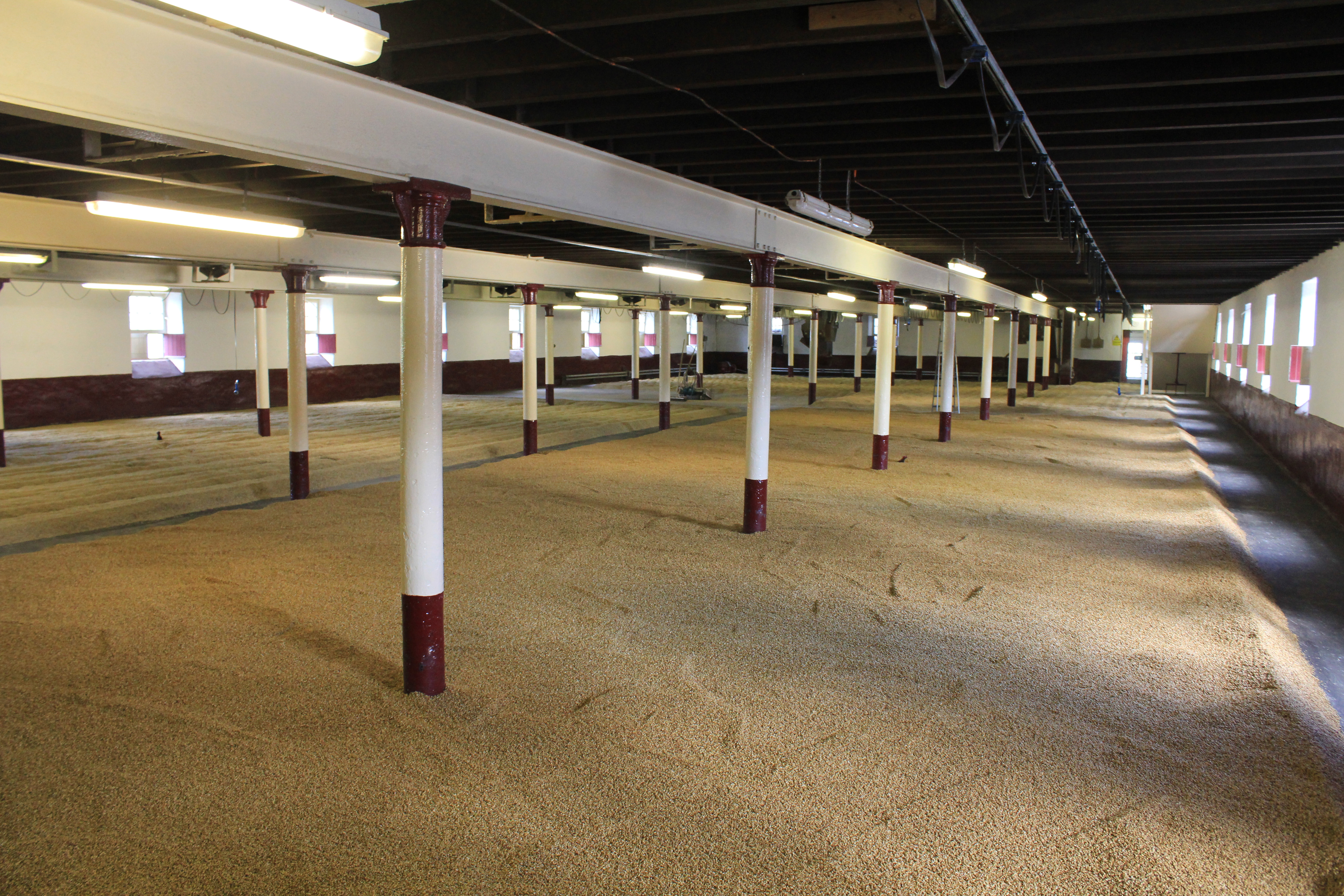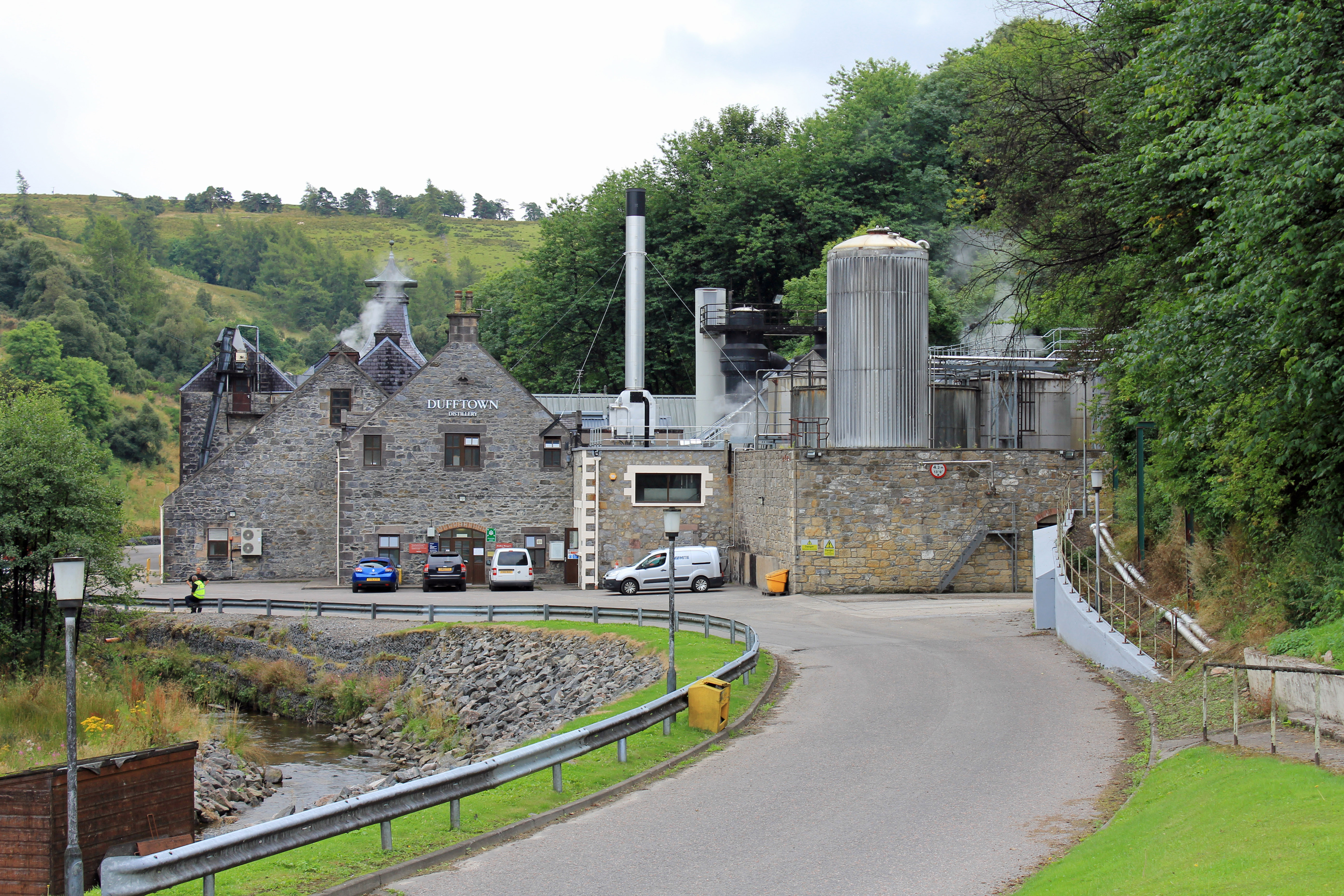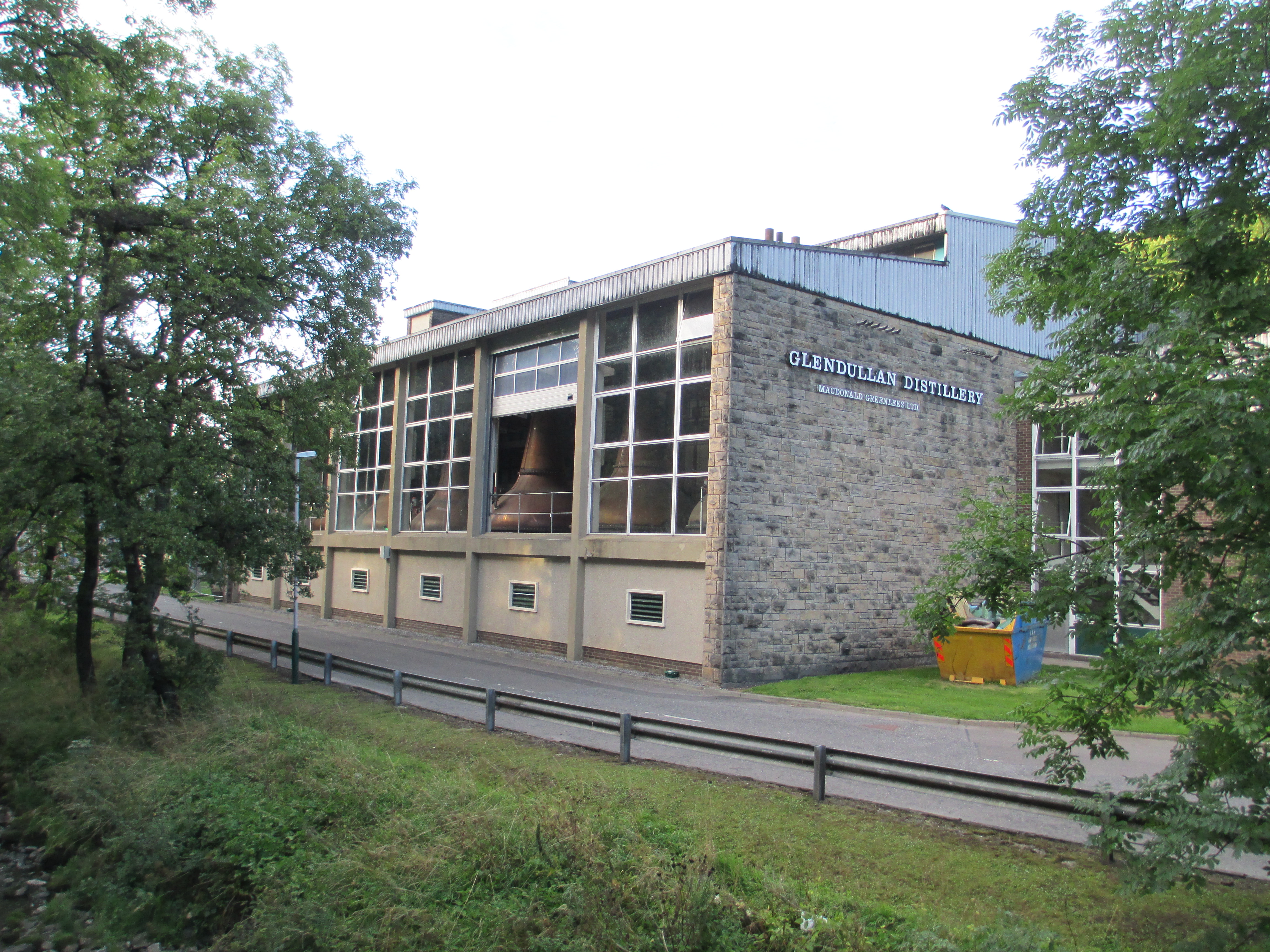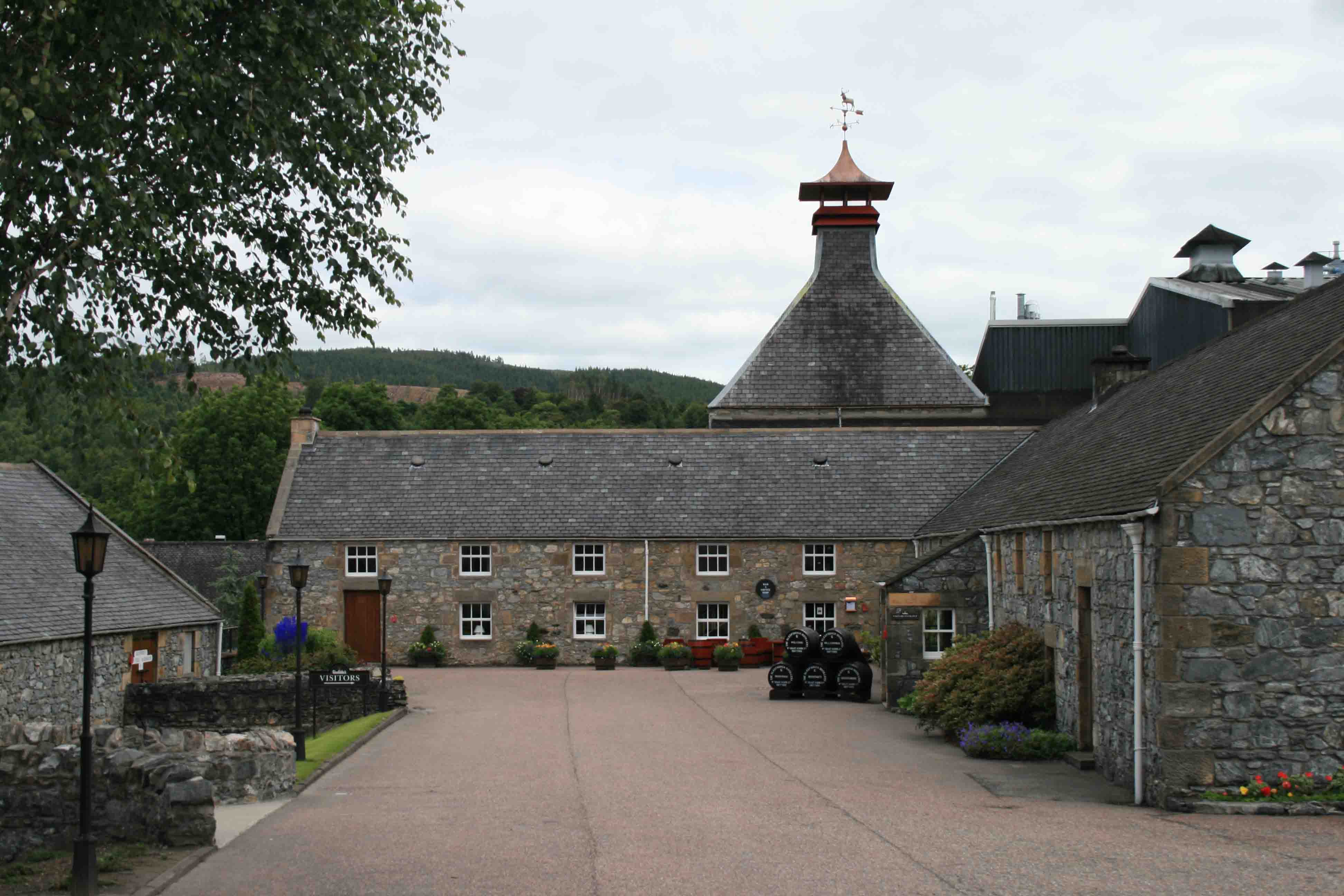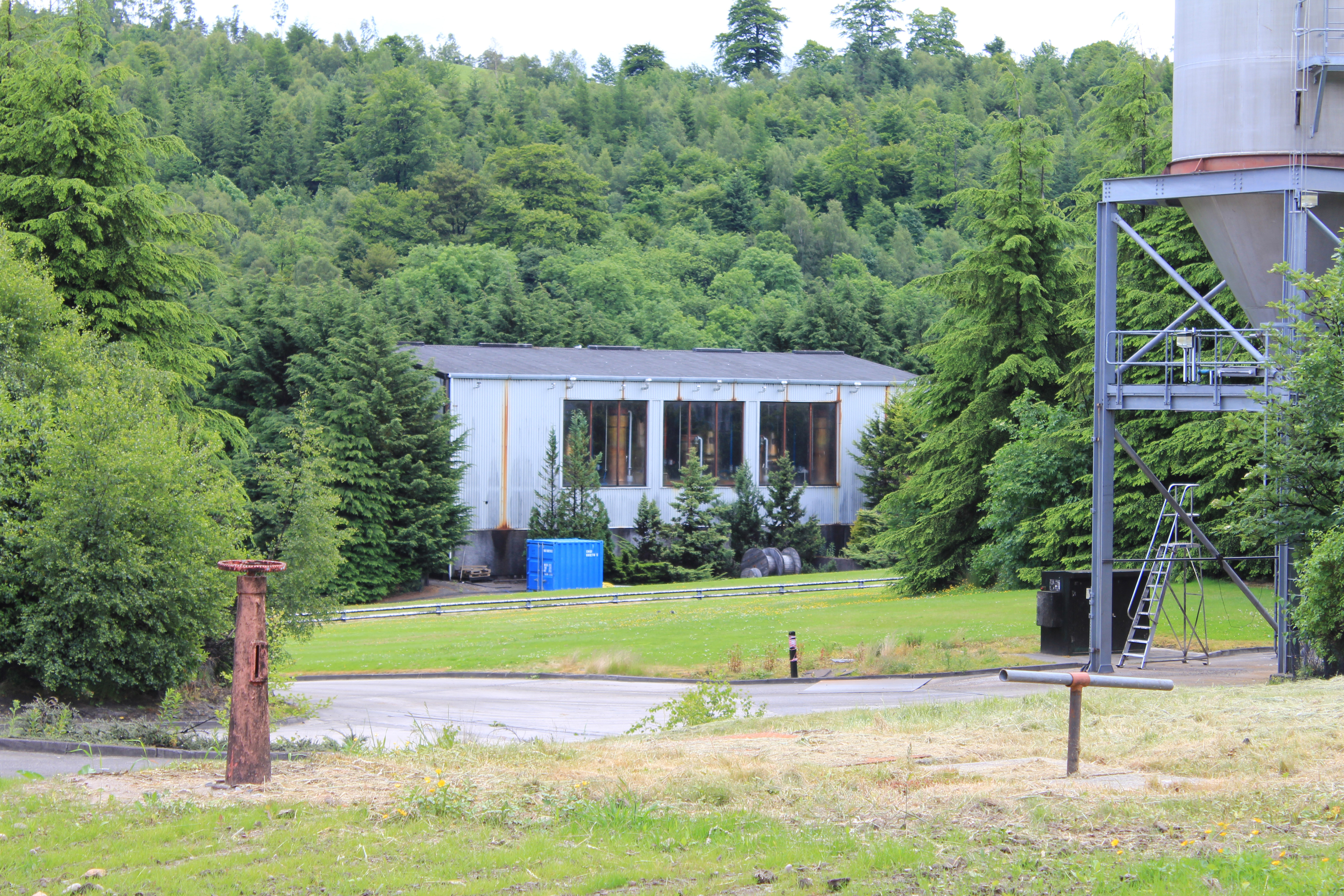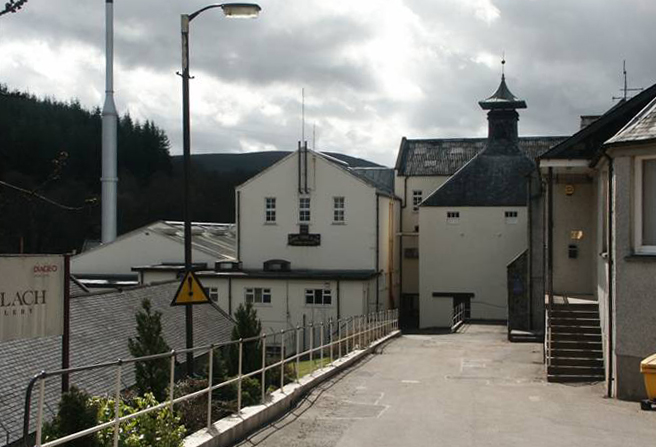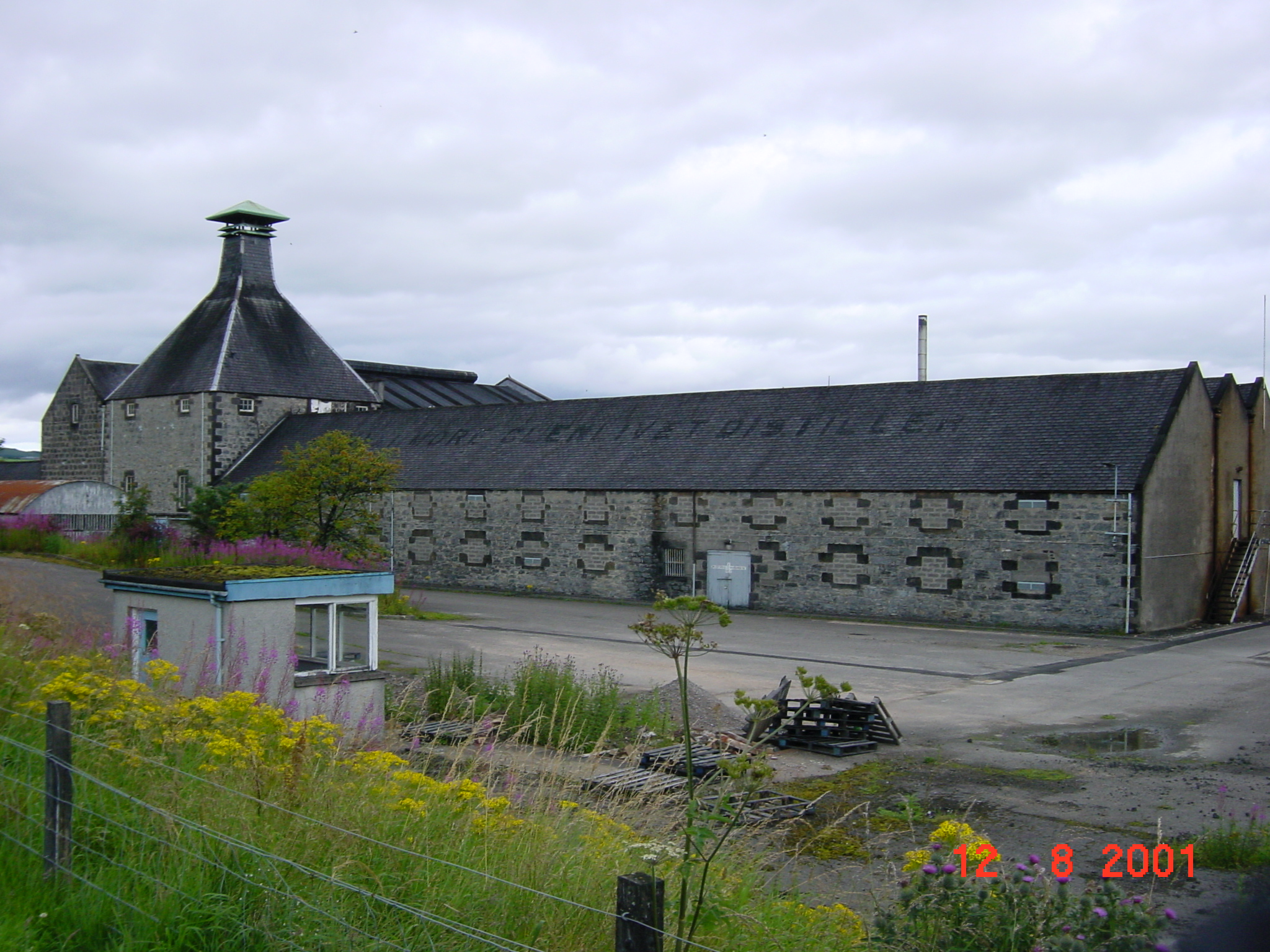The distilleries of Dufftown are:-
Mortlach 1823
Glenfiddich 1886
Balvenie 1892
Convalmore 1894 (closed 1985)
Parkmore 1894 (closed 1931)
Dufftown 1896
Glendullan 1897
Pittyvaich 1975 (closed 1993, demolished 2002)
Kininvie 1990
There are currently 6 distilleries operating in Dufftown which have the capacity to make 38 million litres of pure alcohol per year. This is over 10% of the overall capacity of the industry
Balvenie
Owner: William Grants & Sons
Founded: 1892
Capacity: 7.0 mlpa
History:
- 1892 - William Grant converts Balvenie New House to Balvenie Distillery using equipment from Lagavulin and Glen Albyn. Intended to be called Glen Gordon.
- 1893 - First distillation 1 May.
- 1973 - First official bottling released.
Curiorities:
- Land on which the distillery is on built to stop others developing it
- Malts 15% own barley
- First 6 hours the malt is dried with peat and for the remaining 42 hours it is dried with coal. Phenol content is about 5ppm.
Equipment:
- Mash Tun: Full Lauter
- Washbacks: 9 x Oregon pine
- Wash Stills: 5 x boil ball (3 are 12,729 litres, 2 are 9,092 litres)
- Spirit Stills: 6 x boil ball (12,729 litres)
- Heating: Indirect
- Condensors: Shell and tube
Dufftown
Owner: Diageo
Founded: 1896
Capacity: 6.0 mlpa
History:
- 1895 - Founded by Peter Mackenzie, Richard Stackpole, John Symon and Charles MacPherson.
- 1897 - The distillery is owned by P Mackenzie & Co who also owns Blair Athol.
- 1933 - Bought by Arthur Bell & Sons.
- 1985 - Guinness buys Arthur Bell & Sons
- 1997 - Guinness and Grand Met merge to form Diageo
- 1999 - Explosion in the mill.
Equipment
- Mash Tun: Full lauter (11 tonnes)
- Washbacks: 12 stainless steel
- Wash Stills: 3 plain (13,000 litres)
- Spirit Stills: 3 plain (15,000 litres)
- Heating: Indirect (run hot)
- Condensors: Shell-and-tube
Curiosities:
- 97% of whisky goes into blends in particular Bells.
- When they wanted to make the style more nutty than grassy they increased the fermentation time to 75 hours.
- Spirit stills are bigger than the wash stills.
- Was frequently referred to as Pittyvaich Distillery by the locals due to its proximity to the farm of the same name although the name of the distillery on the original licence appears to be "Dufftown-Glenlivet". Matters were cleared up when Pittyvaich Distillery was opened.
Glendullan
Owner: Diageo
Founded: 1897
Capacity: 5.0 mlpa
History:
- 1896 - Founded by William Williams & Sons, a blending company.
- 1902 - Becomes the favourite whisky of Edward VII
- 1919 - MacDonald Greenlees buys a share of the distillery.
- 1926 - DCL buys Glendullan.
- 1972 - Brand new distillery built on the site.
- 1985 - Old distillery is closed.
- 2007 - Singleton of Glendullan launched in the US.
- 2013 - New bio mass plant is constructed.
Equipment:
- Mash Tun: Full lauter (12 tonnes)
- Wash Backs: 8 x Larch, 2 x stainless steel
- Wash Stills: 3 x Plain (15,500 litres)
- Spirit Stills: 3 x Plain (16,000 litres)
- Heating: Indirect
- Condensers: Shell-and-Tube
Curiosities:
- One of the few distilleries to use hard water.
- It is the River Fiddich that runs past the distillery not the Dullan.
- Used in the Cardhu Pure Malt incident.
Glenfiddich
Owner: William Grants & Sons
Founded: 1886
Capacity: 21.0 mlpa
History:
- 1886 - Founded by William Grant who had learned his trade at Mortlach and using equipment bought from Cardow distillery.
- 1887 - Distilling starts on Christmas Day
- 1898 - Pattisons goes bust and Grants decide to blend their own whisky (Standfast)
- 1957 - Three corner bottle is introduced.
- 1963 - First whisky to be marketed as a single malt.
- 1969 - Opens first visitors centre in Scotland.
- 2011 - First malt brand to sell over 1 million cases (12 million bottles) in a year.
- 2017 - Construction starts on a new still house.
Equipment:
- Mash Tun: 10 full lauters (10.2 tonnes)
- Washbacks: 48 Oregon Pine
- Wash Stills: 16 plain (9,500 litres)
- Spirit Stills: 27 boil ball (5,500 litres)
- Condensors: Shell-and-tube (reputedly 1 stainless steel condenser)
Kininvie
Owner: William Grants & Sons
Founded: 1990
Capacity: 4.8 mlpa
History:
- 1990 - The distillery is inaugurated on 26 June and the first distillation is on 18 July.
- 2010 - Distilleries closes.
- 2012 - The distillery re-opens after refurbishment. Now uses the washbacks previously used by Balvenie.
Equipment:
- Mash Tun: 1 x Stainless steel full lauter
- Washbacks: 10 x Douglas fir
- Wash Stills: 3 x Plain (14,600 litres)
- Spirit Stills: 6 x Boil-Pot (8,600 litres)
- Heating: Indirect (steam coils)
- Condensors: Shell and tube.
Curiosities:
- The distillery only consists of one still house which for a while led people to state it was not a separate distillery to Balvenie.
Mortlach
Owner: Diageo
Founded: 1823
Capacity: 3.8 ml
History:
- The distillery was founded in 1823 by James Findlater and his partners Donald McIntosh and Alexander Gordon on land leased from the Earl of Macduff. It was the first distillery in Dufftown. Local tradition has it that the distillery is founded on the site of an illicit still which drew its water from Highlandman John's Well.
- Mortlach had a chequered career changing hands at least 4 times and being silent for some time, during which the barley granary was used as a Free Church.
- 1831 - Distillery is sold to John Robertson for £270.
- 1832 - A&T Gregory buy Mortlach
- 1842 - Distillery is owned by John Alexander Gordon and the Grant brothers and is silent. Equipment moved to Glen Grant.
- 1851 - Back in production after being used as a brewery and a church
- 1862 - John Gordon is selling his whisky mostly in Leith and Glasgow under the name “The Real John Gordon". John Gordon had the byres that adjoin the distillery where he kept about 24 head of cattle. He used the burnt ales and draff as cattle feed. A local journal reported “the ale being conveyed to them in pipes, so that nothing more is necessary than to turn a cock in the byre and let it flow into their troughs".
- 1853 - George Cowie was a land surveyor who had helped survey the proposed new railway lines in Banffshire becomes part owner in the distillery.
- 1867 - John Gordon dies and George Cowie becomes sole owner. He developed the business and became provost of Dufftown and chairman of the local school board and cottage hospital. He also took the tenancy of neighbouring Pitglassie Farm and bred Aberdeen Angus cattle.
- 1895 - His son, Dr Alexander Mitchell Cowie, returned from Hong Kong to take over the business in 1895.
- 1897 - He further developed the business and in 1897 expanded the distillery with 3 new still and a railway siding from Dufftown station. He became one of the leading Highlander distillers. He also spent some time as a Deputy Lieutenant of Banffshire.
- 1923 - Dr Cowie's only son was killed in the First World War and in 1923 he sold Mortlach, at that time the largest distillery in the area, to John Walker & Sons and this is when Mortlach's association with Johnnie Walker blends starts.
- 1968 - Floor malting ceases.
- 2014 - Constructions commences on a second still house which will take capacity to nearly 8 mlpa.
Equipment
- Tun: Full Lauter (12 tonnes)
- Washbacks: 6 x Larch
- Wash Stills: 3 x boil ball (2 x 7500 litres, 1 x 16,000 litres)
- Spirit Stills: 3 x boil ball (1 x 7000 litres, 2 x 9300 litres)
- Heating: Indirect
- Condensors: Worm tubs
Convalmore
Owner: William Grant & Sons
Founded: 1894 (closed 1985)
History:
- 1894 - Established by the Convalmore-Glenlivet Distillery Co which was a group of Glasgow blenders.
- 1905 - Company failed and was bought by P Lowrie & Company which was later acquired by James Buchanan.
- 1909 - Many of the buildings destroyed by fire.
- 1910 - Distillery rebuilt incorporating a continuous still.
- 1915 - Continuous still abandoned.
- 1925 - Acquired by DCL.
- 1985 - Closed.
- 1990 - Buildings sold to William Grant.
Parkmore
Owner: Edrington
Founded: 1894 (closed 1931)
History:
- 1894 - Established by James Watson & Company.
- 1923 - Watson's was acquired by Buchanan-Dewar's and John Walker and Son's. The mature stock of 8 million gallons was shared between the 2 companies.
- 1925 - Became part of DCL.
- 1931 - Closed.
- 1988 - Sold to Edrington.
Pittyvaich
Owner: Diageo
Founded: 1974 (closed 1993)
Capacity: 1 million proof gallons at time of closure
History:
- 1974 - Established by Arthur Bell & Sons as a replica of Dufftown distillery.
- 1985 - Bells is bought by Guinness.
- 1993 - Closed.
- 2002 - Demolished.
Curiosities:
- During the early 1990s it was a back-up production facility for Gordon's gin and was reputed to be the first place gin was produced in Scotland to prove that it could before production was moved from Essex to Cameronbridge.
- Closed as the building had deteriorated and it had an asbestos roof.

